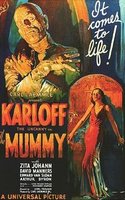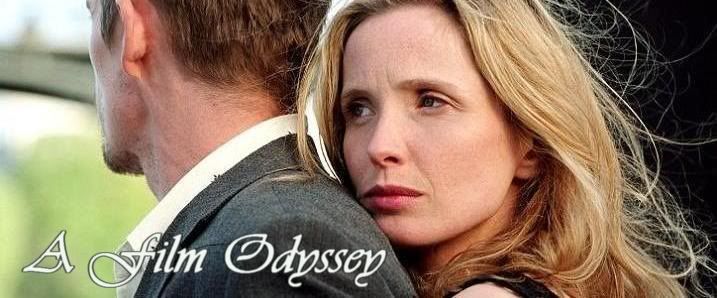The Mummy (1932)
 The one-two punch of 1931’s Dracula and Frankenstein jumpstarted Universal’s long-running “monsters” series, and if the need to get a fresh product into theaters as quickly as possible was the prevalent feeling (so as to keep the box office dollars rolling), then 1932’s The Mummy is proof of what comes from studio executives with hungry dollar signs in their eyes. I might fault Dracula for being drably composed and sequences, but it has far more soul than the assembly-line aesthetic of The Mummy. Only three films into their sound foray in the genre, Universal had already laid down a formula to sap their works of their potential life force. Ironic, then, that the only real note of interest in this otherwise droll affair is the undead titular character, played by the inimitable Boris Karloff with an eerily sedative glow, which unfortunately fails to transfer to the film as a whole.
The one-two punch of 1931’s Dracula and Frankenstein jumpstarted Universal’s long-running “monsters” series, and if the need to get a fresh product into theaters as quickly as possible was the prevalent feeling (so as to keep the box office dollars rolling), then 1932’s The Mummy is proof of what comes from studio executives with hungry dollar signs in their eyes. I might fault Dracula for being drably composed and sequences, but it has far more soul than the assembly-line aesthetic of The Mummy. Only three films into their sound foray in the genre, Universal had already laid down a formula to sap their works of their potential life force. Ironic, then, that the only real note of interest in this otherwise droll affair is the undead titular character, played by the inimitable Boris Karloff with an eerily sedative glow, which unfortunately fails to transfer to the film as a whole.I suspected a droll rehash of Dracula’s plot structure even before the close of The Mummy’s opening credits (never a good sign, source of rehashing notwithstanding), tipped off by the uninspired re-use of the former film’s title scoring. The minimal plot is, in terms of pure exposition, hardly feature-length, so it is not in the best interest of the work that the story begins immediately without any attempt to build mood, tone, or a sense of location. Excavated in 1921 Egypt, the mummified prince Im-Ho-Tep returns to life when a naïve archaeologist utters a life-endowing spell, only to die a lunatic, the only witness to the reanimated corpses’ escape. Ten years later, Im-Ho-Tep (under the alias Ardeth Bey) returns to find the spirit of his long-lost love, now embodied in a woman named Helen (Zita Johann).
While The Mummy is more interestingly shot than Dracula (particularly in it’s use of facial close-ups, such as the downright frightening awakening of Im-Ho-Tep, his glistening eyes jumping out from the dusty, dead flesh and bandages around them), the majority of its elements take on the effect of what one would expect from overworked assembly line employees: a product that satiates the bare minimum of technical demands but exhibits no unique aesthetic spirit. From its barely registered love subplot to the already archetypal side characters (who handily know the relevant history and technical information about the ghoul or goblin in question), The Mummy foreshadows the lazy cookie-cutter sequels that would plague successful horror films in decades to come.





Feature: Horror Marathon 2006


When are you doing Young Frankenstein? ;)
Posted by Anonymous |
12:23 PM
Anonymous |
12:23 PM
I hadn't planned on doing that one (there was a lot to pick from), and it's been hard enough keeping up so as it is. Maybe one day I'll do a thing just on Mel Brooks. But I do watch it regularly enough, so I'll have to get to it sometime. :)
Posted by rob humanick |
11:36 PM
rob humanick |
11:36 PM